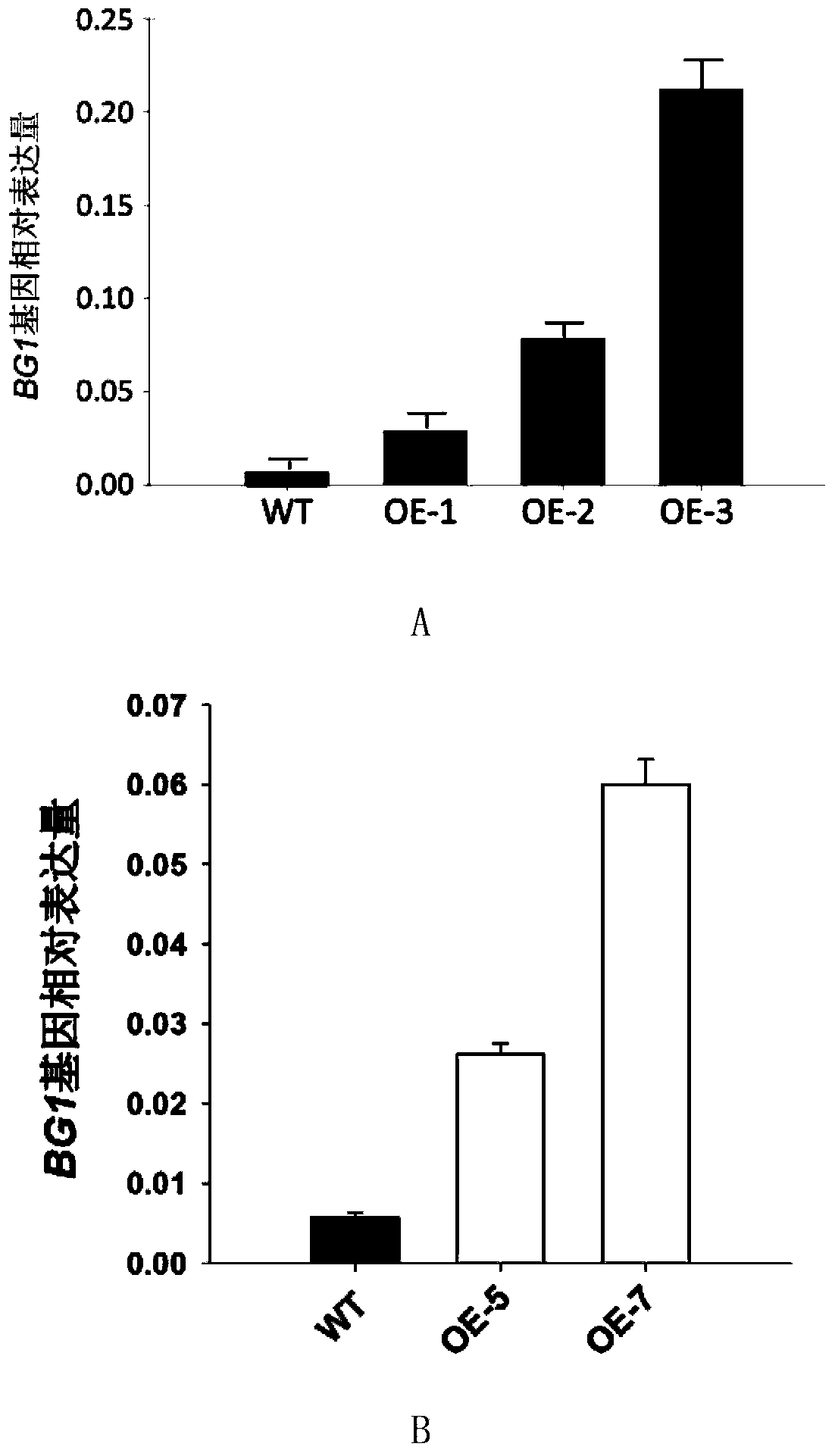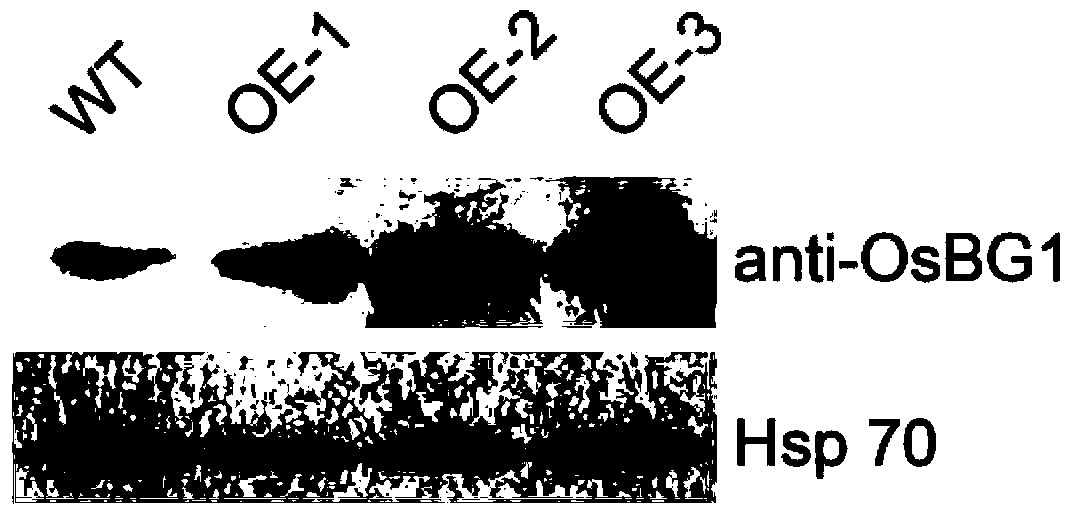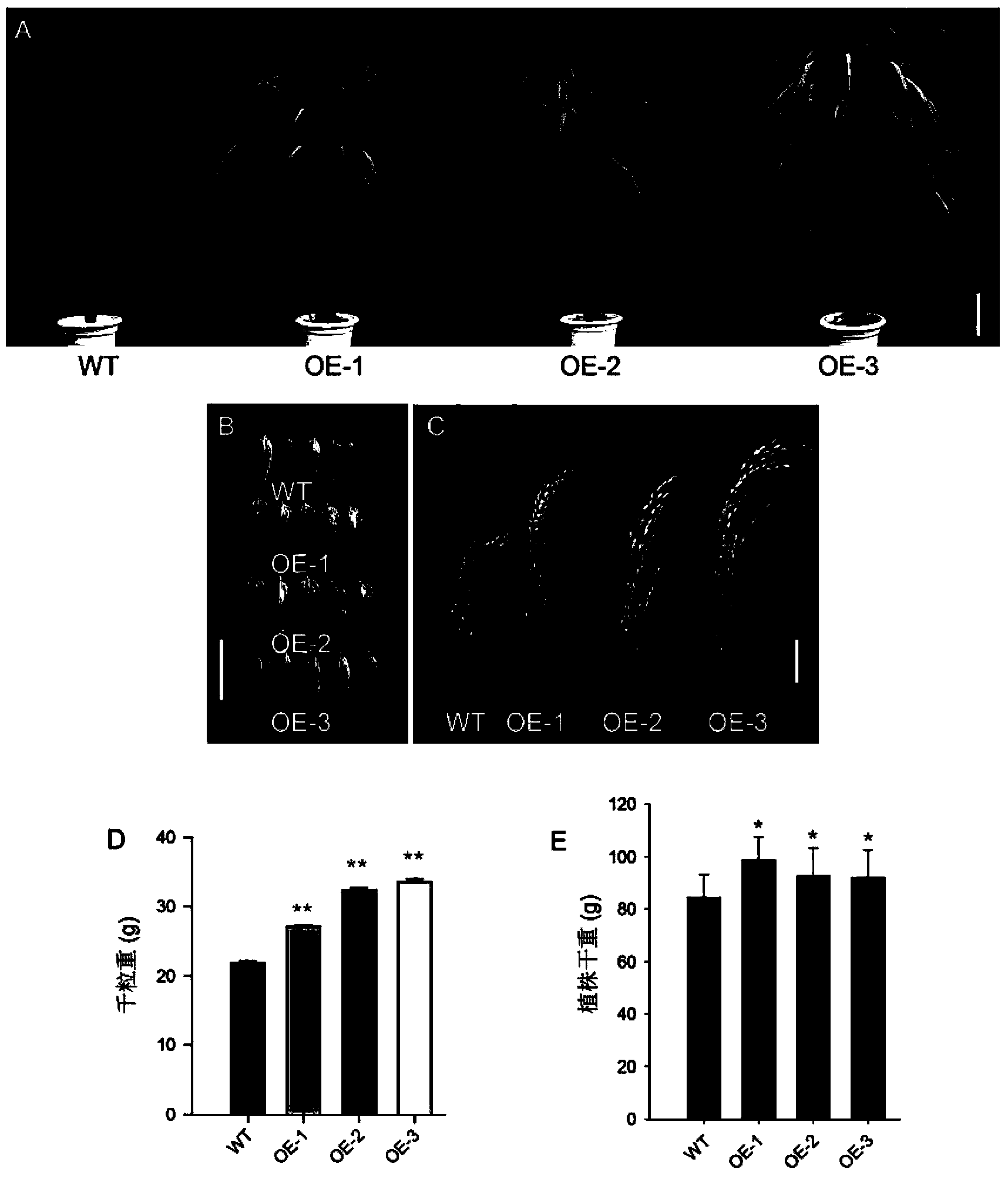Application of paddy rice BG1 proteins and encoding genes of paddy rice BG1 proteins to adjusting growth and development of plants
A technology for encoding genes and transgenic plants is applied in the application field of rice BG1 protein and its encoding gene in regulating plant growth and development, which can solve the problems of limited application and little understanding of molecular mechanism research.
- Summary
- Abstract
- Description
- Claims
- Application Information
AI Technical Summary
Problems solved by technology
Method used
Image
Examples
Embodiment 1
[0100] Example 1, Obtaining and Functional Identification of BG1 Overexpressed Rice
[0101] The gene involved in this example is derived from rice (Oryza. BG1 protein). Sequence 1 consists of 993 nucleotides, and Sequence 2 consists of 310 amino acids.
[0102] 1. Obtaining of rice overexpressing BG1
[0103] 1. Construction of recombinant expression vector
[0104] (1) Extraction of rice genomic DNA
[0105] Rice genomic DNA was extracted using the CTAB method. The specific process is as follows: Put an appropriate amount of rice (Oryza. , 100mM Tris-HCl, 1.4M NaCl), mix well and incubate at 65°C for 30min; after cooling, add 800μl chloroform to each tube, mix well and let stand for 5min, then centrifuge at 12,000rpm for 5min at room temperature; take 600μl supernatant in 1.5ml Add 600 μl of pre-cooled isopropanol to the centrifuge tube, mix thoroughly and precipitate at -20°C for 30 minutes; centrifuge at 12,000 rpm at room temperature for 5 minutes; wash the DNA pell...
Embodiment 2
[0158] Embodiment 2, the acquisition and functional identification of RNAi rice of BG1 gene
[0159] 1. Obtaining the RNAi rice of BG1 gene
[0160] 1. Construction of BG1RNAi vector
[0161] (1) Extraction of rice total RNA and acquisition of cDNA
[0162] Same as Step 1 of Example 1.
[0163] (2) Construction of BG1RNAi vector
[0164] Using the cDNA obtained in step (1) as a template, PCR amplification was performed with primers 3 and 4, and the product was purified after the reaction, which showed that a fragment of about 440bp was amplified, and sequencing showed that the fragment had the sequence 1 in the sequence list. The coding sequence (ORF) of the BG1 gene is shown.
[0165] Primer 3: 5'- CTCGAG CAGCCGTCTTTCTCTCATCCAC-3' (the underlined part is the recognition site of Xho I, and the following sequence is the 61-80th position of sequence 1)
[0166] Primer 4: 5'- GGATCC GCGAAGATGGAGTTGAGGAA-3' (the underlined part is the recognition site of BamH I, and the f...
Embodiment 3
[0188] Example 3, the acquisition of BG1 transgenic Arabidopsis and its functional identification
[0189] 1. Obtaining BG1 transgenic Arabidopsis
[0190] 1. Construction of recombinant expression vector pCAMBIA2300-35S-BG1-GFP
[0191] (1) Extraction of rice total RNA and acquisition of cDNA
[0192] Same as Step 1 of Example 1.
[0193] (2) Construction of recombinant expression vector pCAMBIA2300-35S-BG1-GFP
[0194] Using the cDNA obtained in step (1) as a template, PCR amplification was carried out with primers 5 and 6, and the product was purified after the reaction, which showed that a fragment of about 945bp was amplified, and sequencing showed that the fragment had the sequence 1 in the sequence list The coding sequence (ORF) of the BG1 gene is shown.
[0195] Primer 5: 5'- TCTAGA ATGGAGAGGTGGGCGGCGCCCAAG-3' (the underlined part is the recognition site of Xba I, and the following sequence is the 1st-24th position of sequence 1)
[0196] Primer 6: 5'- ACTAGT ...
PUM
 Login to View More
Login to View More Abstract
Description
Claims
Application Information
 Login to View More
Login to View More - R&D
- Intellectual Property
- Life Sciences
- Materials
- Tech Scout
- Unparalleled Data Quality
- Higher Quality Content
- 60% Fewer Hallucinations
Browse by: Latest US Patents, China's latest patents, Technical Efficacy Thesaurus, Application Domain, Technology Topic, Popular Technical Reports.
© 2025 PatSnap. All rights reserved.Legal|Privacy policy|Modern Slavery Act Transparency Statement|Sitemap|About US| Contact US: help@patsnap.com



